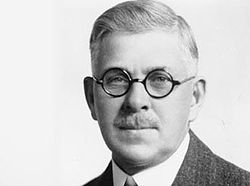When Life Gives You Lemons, Make a Car List
It’s been a while since we’ve done an automotive list and we got to thinking – what are the worst lemons of all time?
What do a 1980s fashion icon and a Smart car have to do with each other? Turns out, more than you think.
![]() If you were a child of the 80s, you no doubt remember Swatch the watch brand. They became must-have fashion icons after their launch in 1983, helping to repopularize analog watches by repackaging them into cool, trendy designs that were completely different from the ubiquitous Casio/Seiko digital watches that were dominating the market at the time.
If you were a child of the 80s, you no doubt remember Swatch the watch brand. They became must-have fashion icons after their launch in 1983, helping to repopularize analog watches by repackaging them into cool, trendy designs that were completely different from the ubiquitous Casio/Seiko digital watches that were dominating the market at the time.
The Swatch logo, similar to the Swiss flag, is still one of the most recognizable logos in the world.
Swatch even helped revitalize the Swiss watch industry, which had seen its number of “watchmakers” decline from 1600 in the 1970s to less than 600 by 1983. This was due to the “quartz crisis”, a term used in the watch industry to describe how cheap quartz watch movements by the Japanese came to dominate the watch market in the 1970s and threaten the very existence of old school watch companies that had made high quality, highly regarded watches for centuries.
Lots of people remember Swatch watches. But few realize their connection to the 21st-century iconic “Smart car”.
In 1994, the Swatch company started partnering with automaker Mercedes to design and bring to market a new kind of affordable vehicle. The goal was to combine Swatch’s awesome design and manufacturing expertise (because they had proven themselves to be really good at designing cool-looking watches that people liked) with the proven car-making skills of Mercedes.
The resulting child is the Smart car. The first production models rolled off in 1998, and by 2015, there have been 1.7 million Smart cars made worldwide.
Remember, when we say “Smart car”, we’re not talking about one of Google’s driverless autos. Or a kind of car that has wireless technology. If you see a Smart car on the road, you rarely forget it. They’re the really small cars that look like they would blow up if they hit a squirrel (those of us on Facebook have probably seen the Smart-car-hits-squirrel meme).
In reality, they’re really safe cars that get awesome gas mileage. Plus, since they are so small, they’re really easy to park, which makes them desirable in large cities.
In fact, the very name “Smart” stands for (S)watch (M)recedes Art car. Bet you didn’t know that, did you? It sure surprised us.
It’s been a while since we’ve done an automotive list and we got to thinking – what are the worst lemons of all time?
Cars sure aren't the same as they used to be. In 2014, consumers have a wide choice of vehicles that go faster, get better gas mileage, and are safer...

True or false – Henry Ford invented the automobile around the turn of the 20th century, making it one of the many history-changing contributions the...